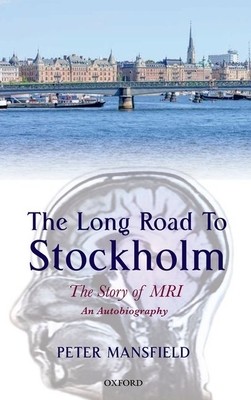
- We will send in 10–14 business days.
- Author: Peter Mansfield
- Publisher: Oxford University Press, USA
- ISBN-10: 0199664544
- ISBN-13: 9780199664542
- Format: 14.2 x 21.8 x 2.8 cm, hardcover
- Language: English
- SAVE -10% with code: EXTRA
Reviews
Description
In this autobiography, Sir Peter Mansfield describes his life from war time childhood that initially sparked his interest in physics to his work in magnetic resonance imaging (MRI) that eventually led to the award of the Nobel Prize in 2003.
Peter Mansfield grew up in London, but was evacuated to Devon during the blitz and following the V1 and V2 attacks on London. At the end of hostilities, he worked briefly in the printing industry before deciding to pursue his real interests in science by joining the Rocket Propulsion Department at Westcott near Aylesbury. Following a period of National Service and his studies at Queen Mary College, University of London, he married and moved to the USA for two years, returning in 1964 as a Lecturer in Physics at the University of Nottingham. In 1972 he spent a sabbatical period in Heidelberg, and during this period corresponded with his student, Peter Grannell, in Nottingham on the novel idea of magnetic resonance imaging. This led to his first paper on MRI which was presented at the first Specialised Colloque Ampere in 1973. During this period, he demonstrated how the MRI radio signals can be analysed and turned into images of the body. In 2003 the Nobel Prize in Physiology or Medicine was awarded jointly to Sir Peter and Paul Lauterbur for their crucial achievements in the development of MRI.EXTRA 10 % discount with code: EXTRA
The promotion ends in 15d.15:03:13
The discount code is valid when purchasing from 10 €. Discounts do not stack.
- Author: Peter Mansfield
- Publisher: Oxford University Press, USA
- ISBN-10: 0199664544
- ISBN-13: 9780199664542
- Format: 14.2 x 21.8 x 2.8 cm, hardcover
- Language: English English
In this autobiography, Sir Peter Mansfield describes his life from war time childhood that initially sparked his interest in physics to his work in magnetic resonance imaging (MRI) that eventually led to the award of the Nobel Prize in 2003.
Peter Mansfield grew up in London, but was evacuated to Devon during the blitz and following the V1 and V2 attacks on London. At the end of hostilities, he worked briefly in the printing industry before deciding to pursue his real interests in science by joining the Rocket Propulsion Department at Westcott near Aylesbury. Following a period of National Service and his studies at Queen Mary College, University of London, he married and moved to the USA for two years, returning in 1964 as a Lecturer in Physics at the University of Nottingham. In 1972 he spent a sabbatical period in Heidelberg, and during this period corresponded with his student, Peter Grannell, in Nottingham on the novel idea of magnetic resonance imaging. This led to his first paper on MRI which was presented at the first Specialised Colloque Ampere in 1973. During this period, he demonstrated how the MRI radio signals can be analysed and turned into images of the body. In 2003 the Nobel Prize in Physiology or Medicine was awarded jointly to Sir Peter and Paul Lauterbur for their crucial achievements in the development of MRI.

Reviews